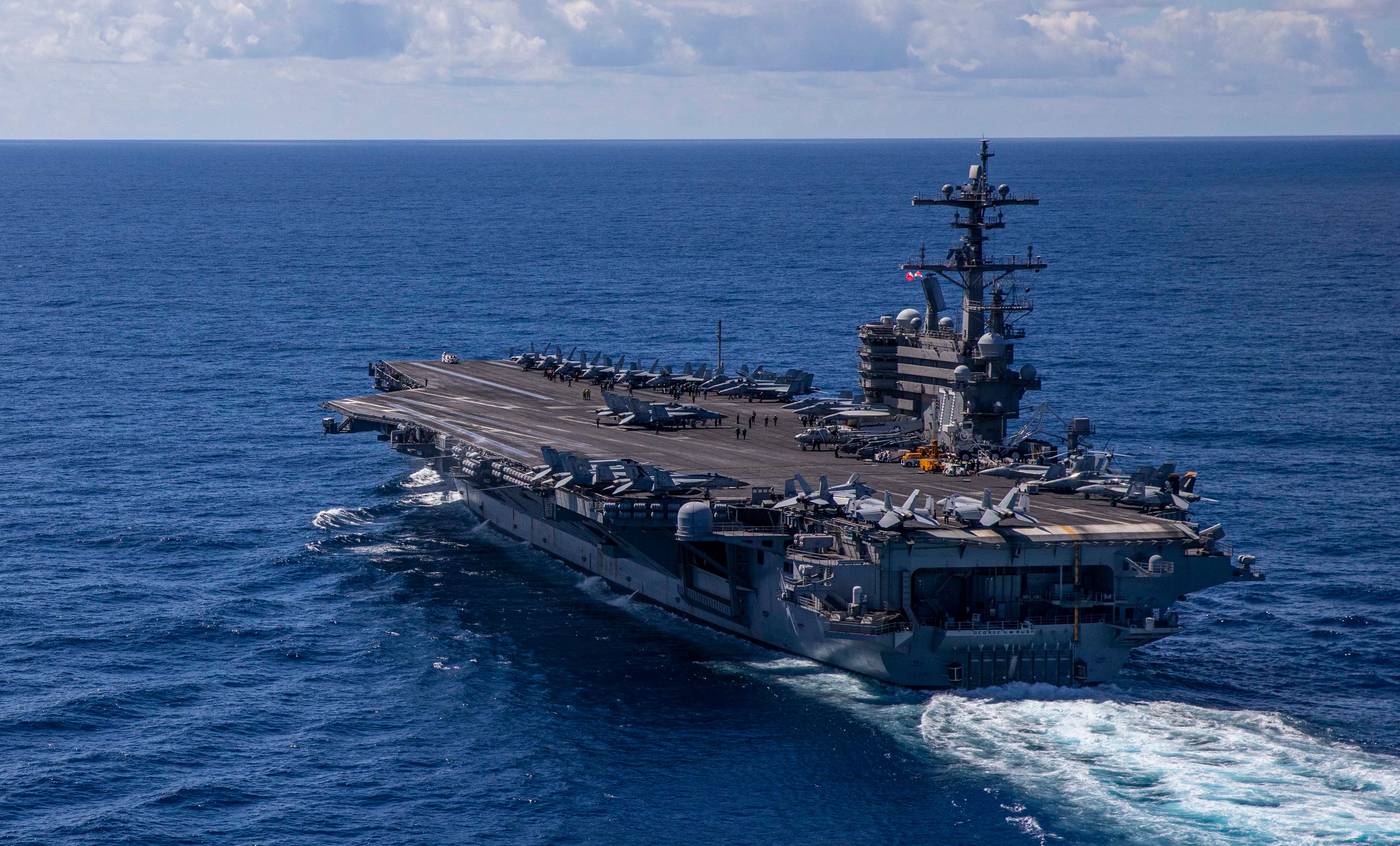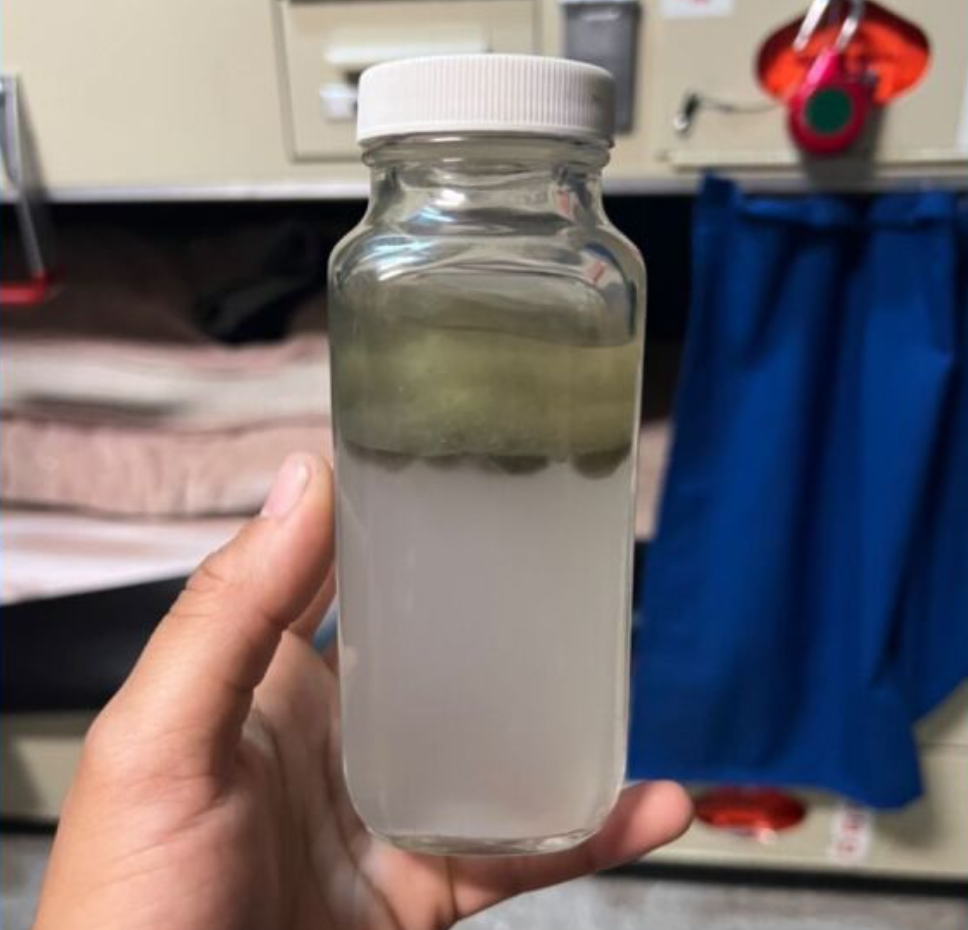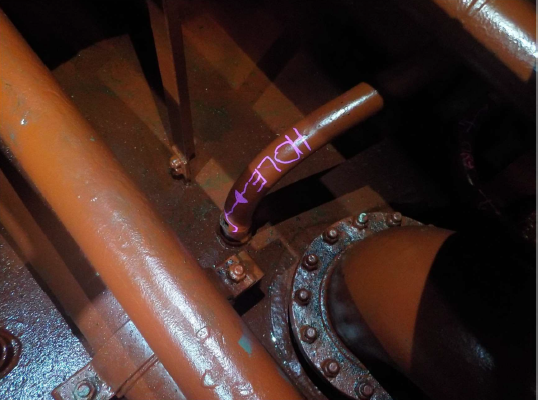
Water contaminated with jet fuel accidentally pumped throughout aircraft carrier USS Nimitz‘s (CVN-68) potable water system and resulted in widespread contamination that made 11 sailors sick in September, according to an investigation the Navy released on Monday.
One week later, dirty bilge water contaminated the potable water supply aboard USS Abraham Lincoln (CVN-72) after entering the system through a hole in the piping, according to a separate investigation also released on Monday.
The two incidents raised concerns about the safety of drinking water aboard the Navy’s aircraft carriers. In response, the Navy established a service-wide working group to study all potable incidents within the last year and create recommendations to improve maintenance procedures, according to the November final endorsement of both reports, signed by commander of Naval Air Forces Vice Adm. Kenneth Whitesell.
Water on Nimitz

On Sept. 16, Nimitz was underway for a training period off San Diego, Calif., ahead of its current deployment. Sailors aboard Nimitz complained of upset stomachs, rashes from the shower and strange smells coming from fountains, starting in the afternoon, according to the report.
The ship’s company quickly discovered that the water had been contaminated with JP-5, and the carrier returned to the pier to start the two-week process of flushing the tanks aboard with one million gallons of San Diego city water and locating the source of the contamination.
The problem began as the crew caught up on repair work left incomplete after Nimitz‘s 2020 deployment. Of the 27 freshwater tanks aboard the aircraft carrier, eight were out of service, according to the report.
During its repair period ahead of the current deployment, maintainers at the Puget Sound Naval Shipyard were only able to bring one of the tanks online, with the other seven in need of flushing and maintenance. Maintainers left it to the ship’s company to bring the other seven tanks online.
Nuclear warships make power when the reactor heats steam to operate massive turbines that drive the ship’s systems. Given the importance of the ship’s water systems to the power plant, the carrier’s reactor department oversees the potable water system, including clearing out the remaining seven tanks.
“Concerned there would be insufficient time to restore the remaining seven tanks to service, the Reactor Officer directed Reactor Propulsion Division to develop plans to empty and restore the remaining tanks without the assistance of the shipyard,” reads the investigation.
“Reactor Propulsion Division developed a sequencing document with procedures to empty the desired tanks by pumping the contents overboard via a hose connected to the potable water system utilizing the ship’s installed potable water piping and pumps.”
The department was able to restore four tanks successfully before reaching the fifth, which was contaminated with JP-5. Based on the documentation from the previous deployment, the reactor department thought the potable water tanks only contained seawater.
Download the document here.
“The ship assessed the consequence of contaminating the potable water system with seawater as low, and they planned to restore cleanliness of the potable water system by flushing the piping and pump with clean potable water,” reads the report.
“The ship did not know or consider the possibility that the tank might contain contaminants other than seawater.”
Unbeknownst to the crew, “the potable water tank was contaminated with JP-5 during the ship’s last deployment between the months of June 2020 and March 2021 when JP-5 leaked into the potable water tank through a deteriorated … gasket,” reads the investigation.
The flushing procedure on the fifth tank isolated it from the rest of the potable water system and the discharge initially showed clear water. The tank was then connected to the rest of the potable water system at about 8:30 p.m. on Sept. 21, and the JP-5 spread throughout the ship.
“The ship’s chain of command took appropriate action to keep the crew safe and initiated actions [to] recover the ship’s potable water system. Immediately upon notification, the ship’s leadership took action to understand and address the problem,” reads the report.
“Within approximately 30 minutes of notification, potable water was secured to the ship and draining and flushing the system commenced. Within approximately 90 minutes, the Commanding Officer and Executive Officer began making … announcements to keep the crew informed of the situation, and the supply department made bottled water available to the crew and arranged for water tanks on the pier the following morning.”
It took the ship two weeks and more than one million gallons of city water to flush the JP-5 from the system and make the water safe enough to drink.
Lincoln and Follow-on Actions

On Sept. 21, about a week after Nimitz came in to port to flush its drinking water systems, the potable water system aboard carrier Lincoln was contaminated with bilge water from a hole in the piping system. The tested water showed it contained the bacteria E. coli and other contaminants that left the water unsafe to drink. Shortly after the contaminated tank went into service, sailors aboard Lincoln complained that the water “tastes weird” and there was a run on bottled water at the ship’s store.
An early chain of confusion throughout the ship slowed down the response to fix the problem, and the cause of the contaminated tank was not discovered until Oct. 18.
“On Oct. 15, the [potable water tank] was opened and inspected by Puget Sound Naval Shipyard (PSNS) Shop 99. Upon opening, the bottom of the tank had a visible black substance layer,” reads the investigation.
“On Oct. 18, PSNS Shop 99 discovered the hole in a vent header of [the tank].”
The hole allowed the polluted water into the tank.
“When bilge levels were high there was a free flow of bilge water into the tank. The regularly occurring seawater, contaminated with oils and greases that collect in the bilge after normal ship operation resulted in the positive bacteriological results and visual indications observed when PW Tank was opened and inspected,” reads the report.
Investigators faulted the teams responsible for the tanks for missing chances to mitigate the spread of the polluted water.
“Basic watch standing principles would have prevented or minimized the spread of the contaminated water in this case. Specifically, there were four missed opportunities for watch standers to identify and address the PW contamination before it spread throughout the ship,” reads the report.
“Indications of bacterial contamination were available to Lincoln as early as January of 2022 and in total, five PW Tanks tested positive for bacteria in early 2022. Lincoln allowed this deviation to normalize without clearly bounding the problem or taking corrective action. As no other CVN has had a PW Tank test positive for BACT in the past 2 years, this should have been a warning sign.”
Following the contamination of the fresh water on both carriers, Air Boss Whitesell ordered a fleet-wide review of potable water procedures aboard aircraft carriers and established a working group to review procedures to prevent future contamination.
A Naval Air Forces spokesman did not have additional information on the working group when contacted this week by USNI News.





